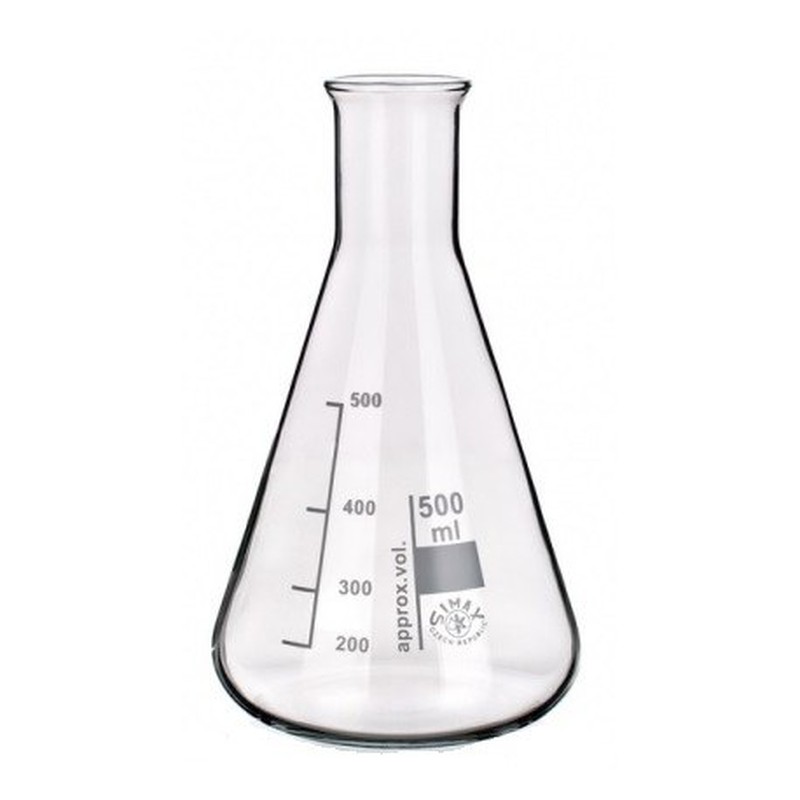All types of volumetric instruments
Everything we need to know about the material we use in the laboratory to measure volumes.

Volume is a metric magnitude of the scalar type that is defined as the three-dimensional extent of a region of space. It can be applied to gases, liquids and solids and the reference unit in the International Metric System is m3.
To express the volume of liquids and gases, the capacity of the container that contains it is usually used, which is measured in liters or derivatives. In distilled water at 4ºC temperature 1dm3 = 1l.
In laboratory volumetric material it is common to work in ml or cm3 , which are perfectly equivalent.
- 1m3 = 1000l
- 1dm3 = 1l
- 1cm3 = 1ml
From a kitchen to a laboratory, we live with material that helps us calculate volume or capacity. A 1l jug of water or a glass to calculate the quantities of rice or grain are everyday examples of measuring volume in the kitchen, while in a laboratory we have other containers with much more precision. Even meteorological observers measure the amount of rain in mm or l / m2 in test tubes.
With this material we will measure exact amounts of liquids, from inert liquids like distilled water to corrosive liquids like acids for acid-base analysis and chemical reactions. Its use is focused on the chemistry, biology laboratories and to a lesser degree the physics laboratories.
Burette:
Elongated graduated containers with a tubular shape and a uniform internal diameter. They incorporate a glass or Teflon tap that is used to regulate the quantity or volume of liquid that is dropped or passed through the burette. The most common are Geissler's burettes.
Image of a burette (click)
They are used to measure invariable volumes of mass and liquid. An example of its use is in acid-base titrations.
Imhoff cones:
The Imhoff cone is used to determine the efficiency of a settler, and consequently to establish the content of removable suspended solids in the primary decantation.
Image Imhoff Cone (click)
The Imhoff cone is a graduated container with transparent conical walls, with a capacity of 1 liter. The device to determine the efficiency of the decanter consists of two equal containers. It is used in tests to assess water quality.
Graduated jugs
They are graduated jugs where we introduce a certain liquid. They are normally 500ml or higher.
Image of graduated jug (click)
Volumetric flask
It is used to measure an exact volume of liquid, up to the level of gauging (line), located in the neck of the flask. There are class A, which are used in analytical chemistry, and class B, of lower quality and precision, used for routine laboratory work. They can go with or without a cap.
Image Volumetric flask (click)
Erlenmeyer flask
It is a container or glass jar with a wider base and a narrow neck. Graduated and with a maximum capacity. It is used to assemble distillation apparatus or to react substances that need a long heating. It also serves to contain liquids that must be kept for a long time.
Erlenmeyer flask image (click)
Kitasato flask
A kitasato is a flask contained within the glassware of a laboratory. It could be defined as an Erlenmeyer flask with a drop tube or lateral branch. It is used to carry out experiments with water, such as distillation, hydro-pneumatic gas collection (displacement of volumes), vacuum filtrations, etc.
Image Kitasatos flask (click)
Test tube
It is a graduated cylinder, made of glass or plastic and used to measure exact volumes. The graduation goes in a range of 1mm or 1cc. It is mainly used in the laboratory but it also has uses in meteorology, pharmacy, food, etc ...
Test tube image (click)
Pipette
Cylindrical volumetric instrument, usually glass, with precise graduation and used to extract determined volumes of liquid from a larger container.
Pipette image (click)
Beaker
Cylindrical container of glass or treated plastic, normally of equal or greater capacity than a flask. It is graduated in ml, but this graduation is not entirely accurate. They are used for the analysis of liquid substances, in chemistry and biology laboratories.
Beaker image (click)
All these products to measure volumetry can be divided depending on whether they are made of plastic or glass. They are materials resistant to heat and to the corrosion of the reagents used in the laboratory and even more importantly, invariable to any material they cover, to ensure that they do not produce any reaction that alters the experiment we are conducting.
Plastic.
Polymethylpentene, the lightest known thermoplastic, is used. Used in medicine, laboratory and microwave containers. Polypropylene, very resistant to chemical solvents and Methacrylate is also used.
Glass
There are different types of glass used for laboratories, among which we highlight ECO glass, GLASSCO glass and SIMAX glass. All of them have borosilicate as base material. The amber colored glass is to avoid reactions with light.





Opinions of our clients
Receive our news